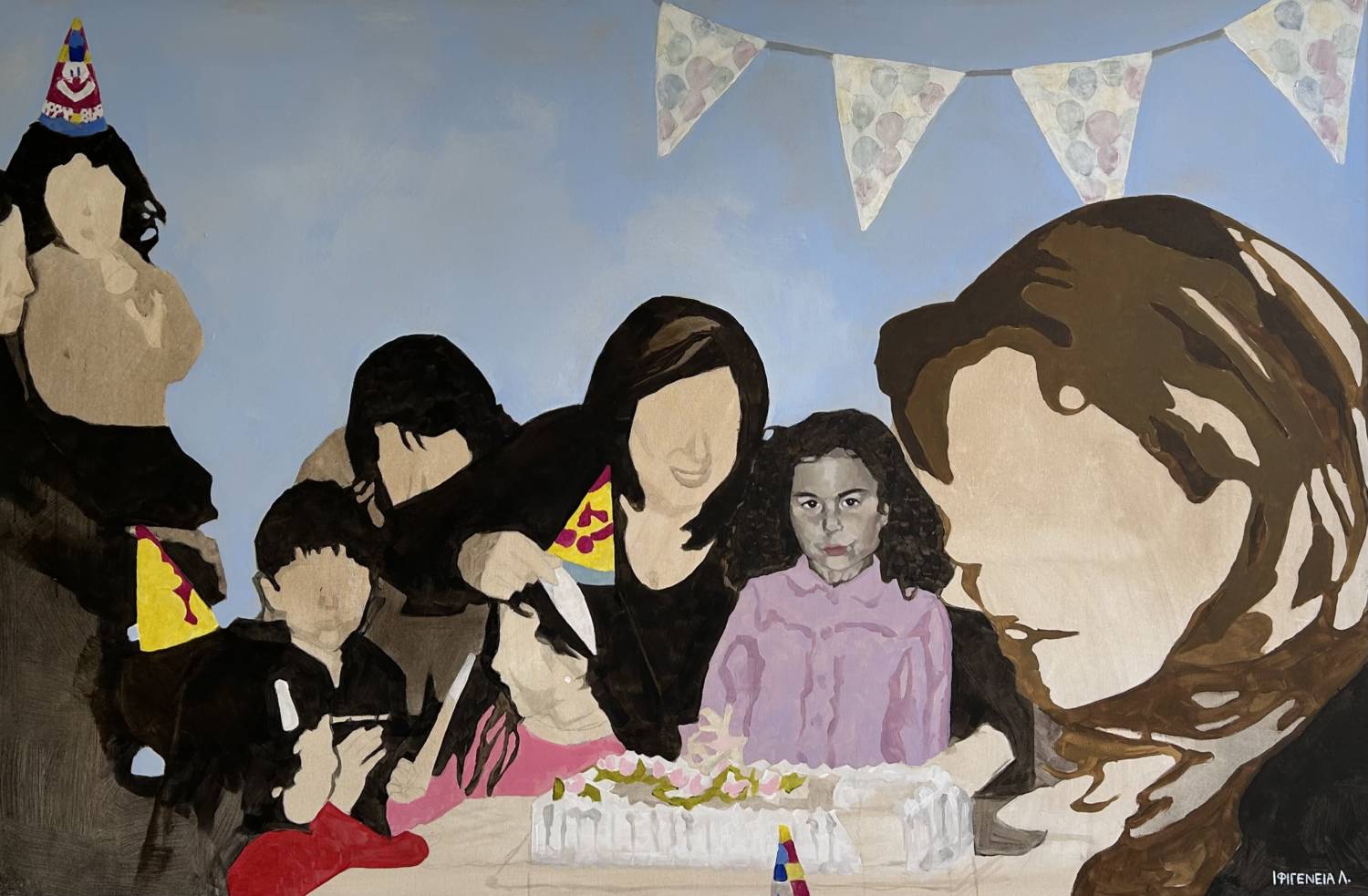Graduates of the School of Fine Arts of the Cyprus University of Technology (CUT) are set to make their debut on the Limassol exhibition scene, with a work at the Lumiere Gallery in which they explore the limits of memory.
Christina Drakou, owner of the contemporary art gallery Lumiere, invited 12 final-year students of the Department of CUT, to host their work pro bono in an exhibition entitled “MEMORY/MEM-ORIA: Exploring the Boundaries of Memory.”
As Drakou said, in her contacts with the CUT, she proposed that this event should become an institution and every year the gallery will host the works of the graduates of the School of Fine Arts.
This will allow students to showcase their work to a wider audience and take their first steps in the art world. At the same time, Drakou will offer 1,000 euros every year for the “I love you” Foundation’s prize for children to the best graduate of the School of Fine Arts.
In the exhibition entitled MEM-ORIA, the young artists use various media, from painting to multimedia installations, to capture the tension between fluid memories and defined boundaries of understanding.
By releasing memories from the constraints of time, the young and emerging visual artists invite viewers to confront the challenge of shared human experience without abolishing the particular value of individual perception.
The following artists participate in the exhibition: Alexandros Macawan, Dimitris Mostratos, Despina Athanasiou, Elizabeth Sophia Rigby, Philippa Charalambous, Iphigenia Loizidou, Katerina Demetriou, Maria Kyriakou, Maria Tryfonos, Michalis Skarparis, Rositsa Stavreva and Xenia Roussou.
Seven of the seniors taking part in the exhibition unfold the concept of their work, starting from the theme of memory:
Alexandros McCowan: Fingerprints
“If you cut the trunk of a tree, you can tell its age in the circles that form. You can read its history, envision the generations that have slept in its dew and recall the dreams that have whispered in its shade,” explains Alexandros McCowan. “I envisioned my sculpture Footprints while thinking about how time leaves its footprints and how they remain indelible in time. The work is inspired by a natural element, iron. In creating it I decided to leave imperfections such as dust, specks and paint to represent how our past and all experiences make us the people we are until we die. The sculpture consists of two parts, the semi-circles and the cornice. The cornice, although not originally a part of the work, ended up playing an important role in the composition. It supports the whole sculpture, and as a result, it combines and creates a new concept, the threads of life.”
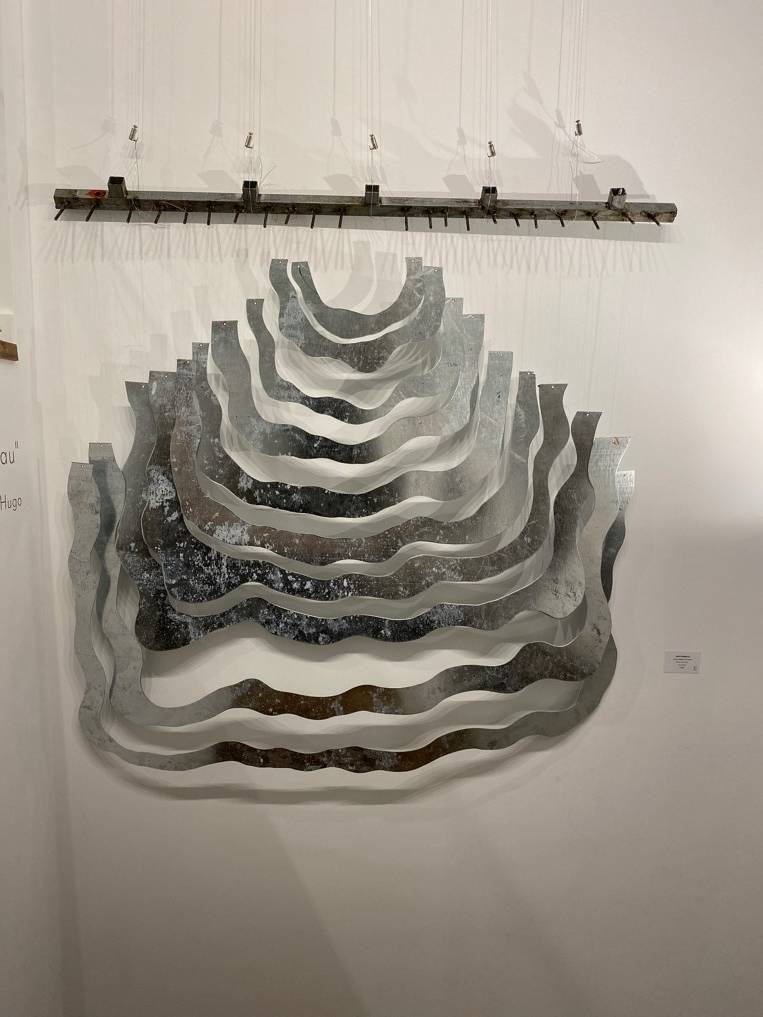
Demetris Mostratos: You see life and death in the eyes
“The Light Of Memory, oil on canvas, depicts the eye, a sensory organ of vision that transmits light to the brain, provides most of the nourishment to memory, allows for the imprinting of many images on the brain, and becomes the recording instrument of memories. Eye, a sensory tool of unique aesthetics,” notes Demetris Mostratos. “The eye not only receives light stimuli but also gives them. The relationship between the eyes and the environment is bidirectional. The eye is the main means of human contact and relationships. We have both absorption and reflection, black and white coexist and complement each other. The unique colours of the iris are an excellent visual stimulus. From the eyes we recognise people, in the eyes we read their emotions, love, love, and hate, we see life and death, the light and darkness of the human soul. This is captured in the painting, which is a narrative of art that unites aesthetics with observation.”
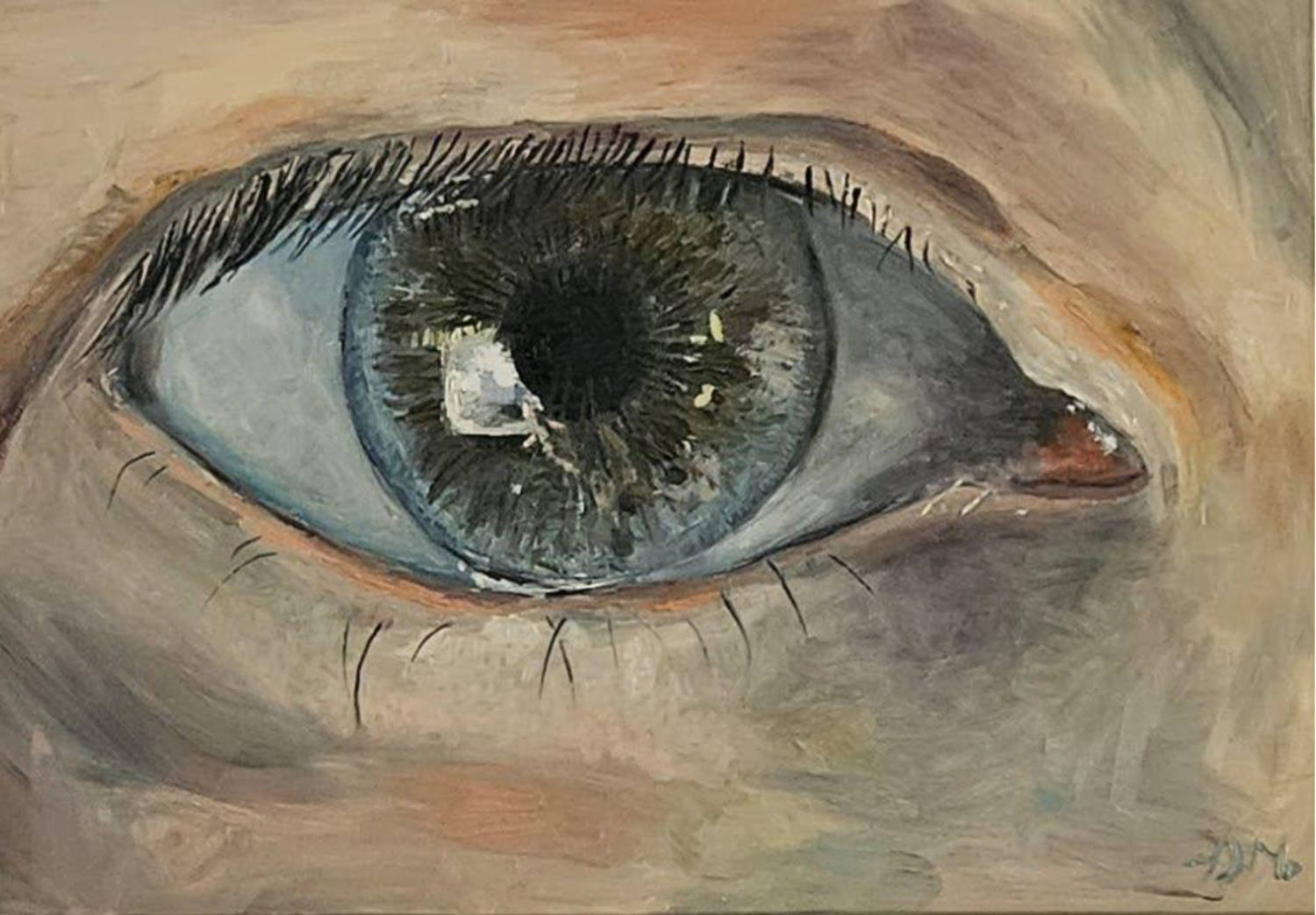
Iphigenia Loizidou: Self-portrait
Iphigenia Loizidou’s self-portrait depicts a snapshot of a birthday party. The central figure is described in detail, in contrast to the surroundings and the people around him who are impersonal or incomplete. The colour palette, the artist comments, consists of cool colours to add to the emotion and focus the style. Also, the bright, cheerful colours give a more pop mood. “As the birthday returns each year, a memory is created that, despite the different circumstances and environments, retains the same feelings. While it should bring positive emotions, it is a melancholy day, as it is surrounded by high expectations that often lead to disappointment. As people come and go, change and loss become inevitable, and the discovery that you are no longer a young child but an adult who forgets and is forgotten adds to the nostalgia of the experience. Memories are built and lost over time, and all that’s left behind are a few photos to remind you.”
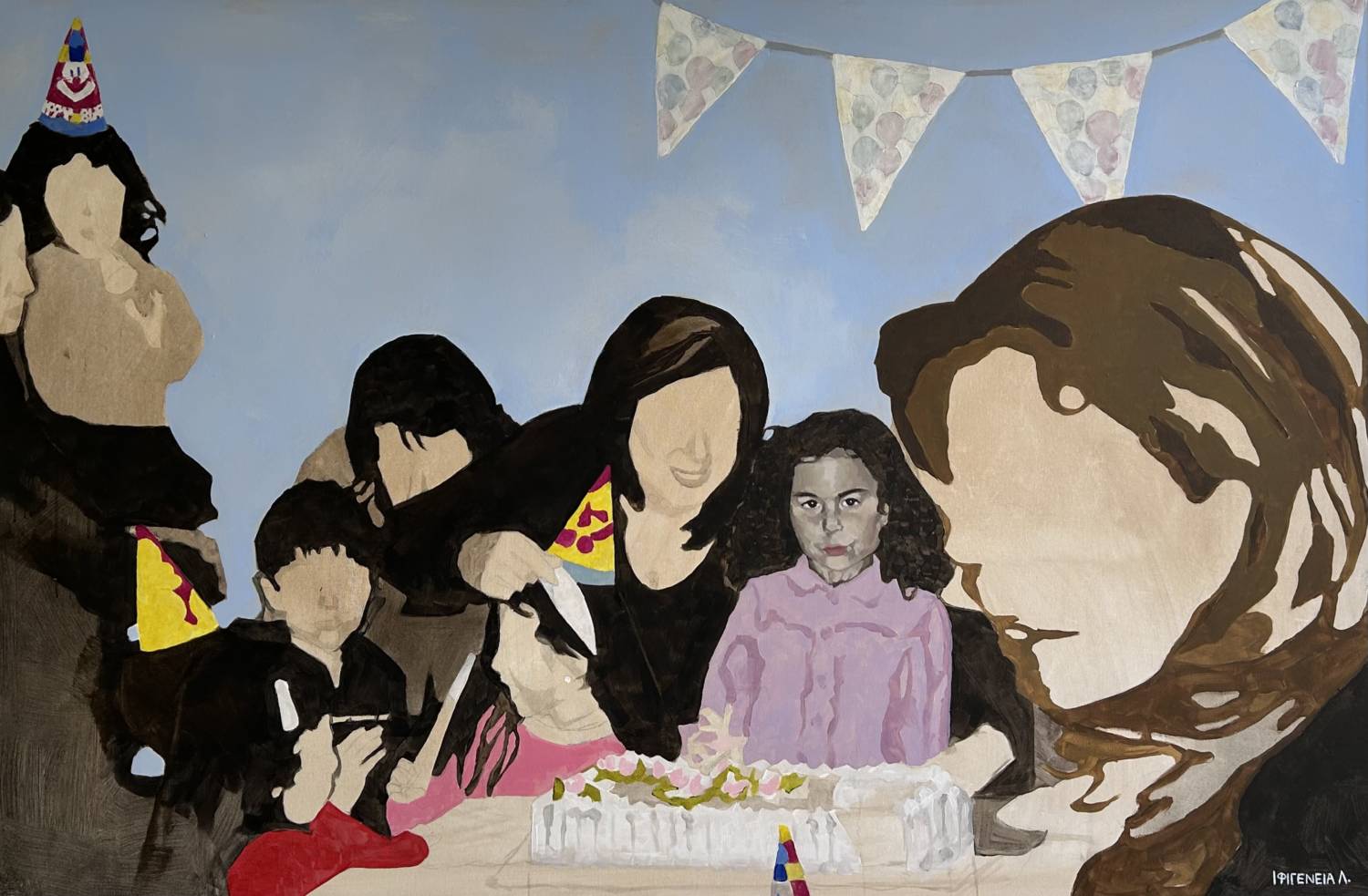
Michalis Skarparis: Naked female body
“My work explores the interplay of memory and boundaries, with warm colours and free raw brushstrokes. The work, a naked female body, develops a visual dialogue that highlights the fluidity and resilience of personal memories,” says Michalis Skarparis. “The painting prompts reflection on how memories define and transcend the spaces we inhabit. The contrast between the expansive figure and the confined canvas reinforces the meaning of how our memories can simultaneously liberate us from limitations and confine us to the boundaries of our own experiences.”

Despina Athanasiou: On the traces of time
The work is a sculptural installation consisting of a tie covered with cement. The artist tried to copy it into a drawing of another 1970s-style tie that belonged to her refugee grandfather. In this way, she wants to show that a refugee, when he goes to the free territories, can never feel the way he felt in his ancestral lands. Her grandfather’s tie symbolises the ancestral lands and she painted the free areas of Cyprus. As the artist explains, trying to faithfully copy her grandfather’s tie was futile, as hers did not turn out the same as his and in some places it cracked.
The work is a reference to family experiences and memories of the 1974 war in Cyprus. In the context of the uprooting of her people, she takes their objects, which refer mainly to that time and tries to integrate them into the present. All this, she explains, acts as a healing of the trauma between dream and nightmare.
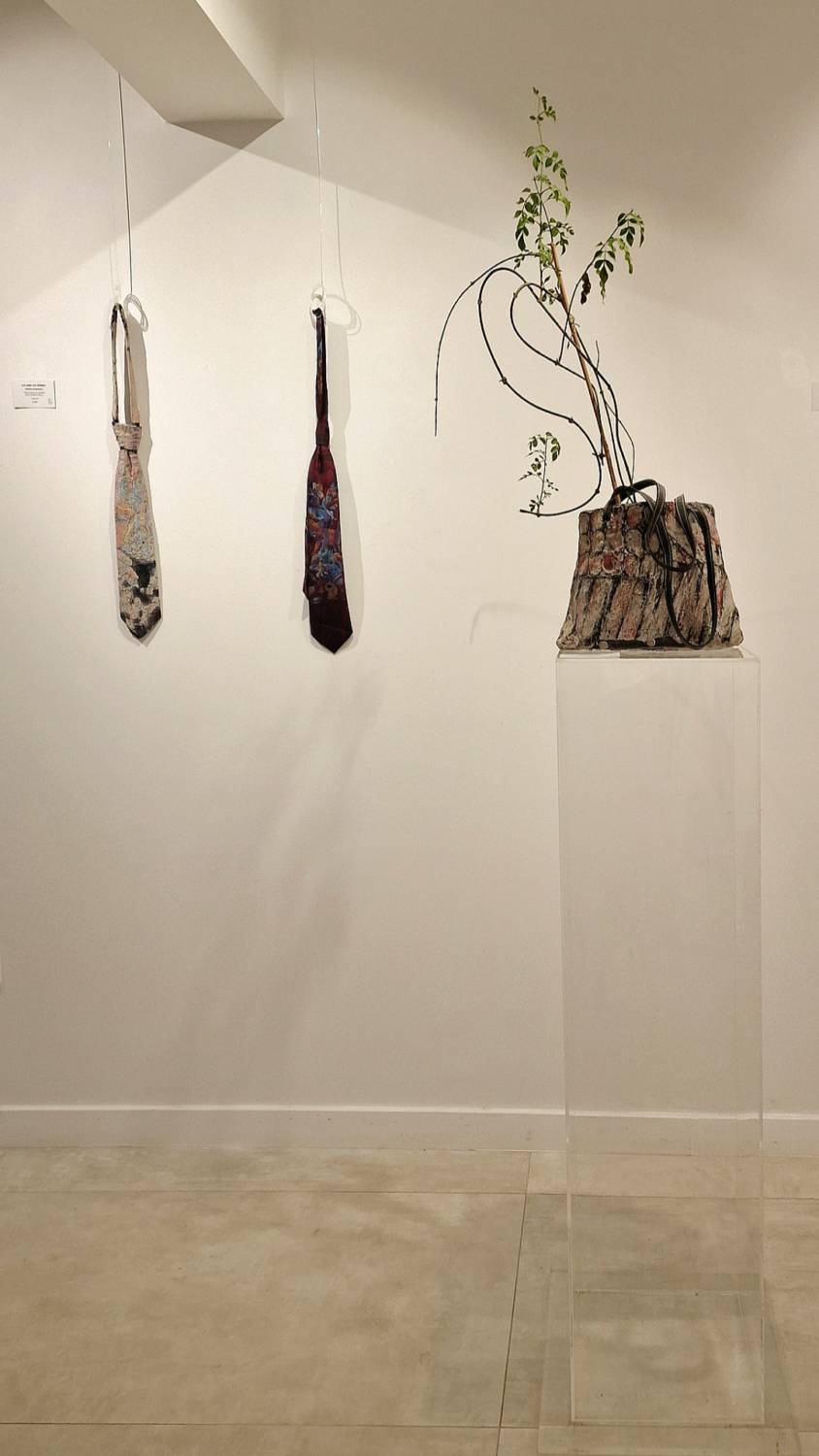
Rositsa Stavreva: Living Memories
In this work by Rositsa Stavreva, a symphony of bright colours “dances” on the canvas. “The creative process is embodied in the abstract writings that form rhythmic waves, depicting the flow of thoughts during creation. Painting becomes a poetic expression, seeking to freeze fleeting moments in time and capture them on canvas,” she says.
Embedded in the layers of colour and form, the artwork becomes a container of memories, a visual diary that connects with the viewer. “It is an invitation to explore the intangible, to dive into the sea of emotions and follow the journey of capturing fleeting moments that linger in the mosaic of memory,” says the artist.
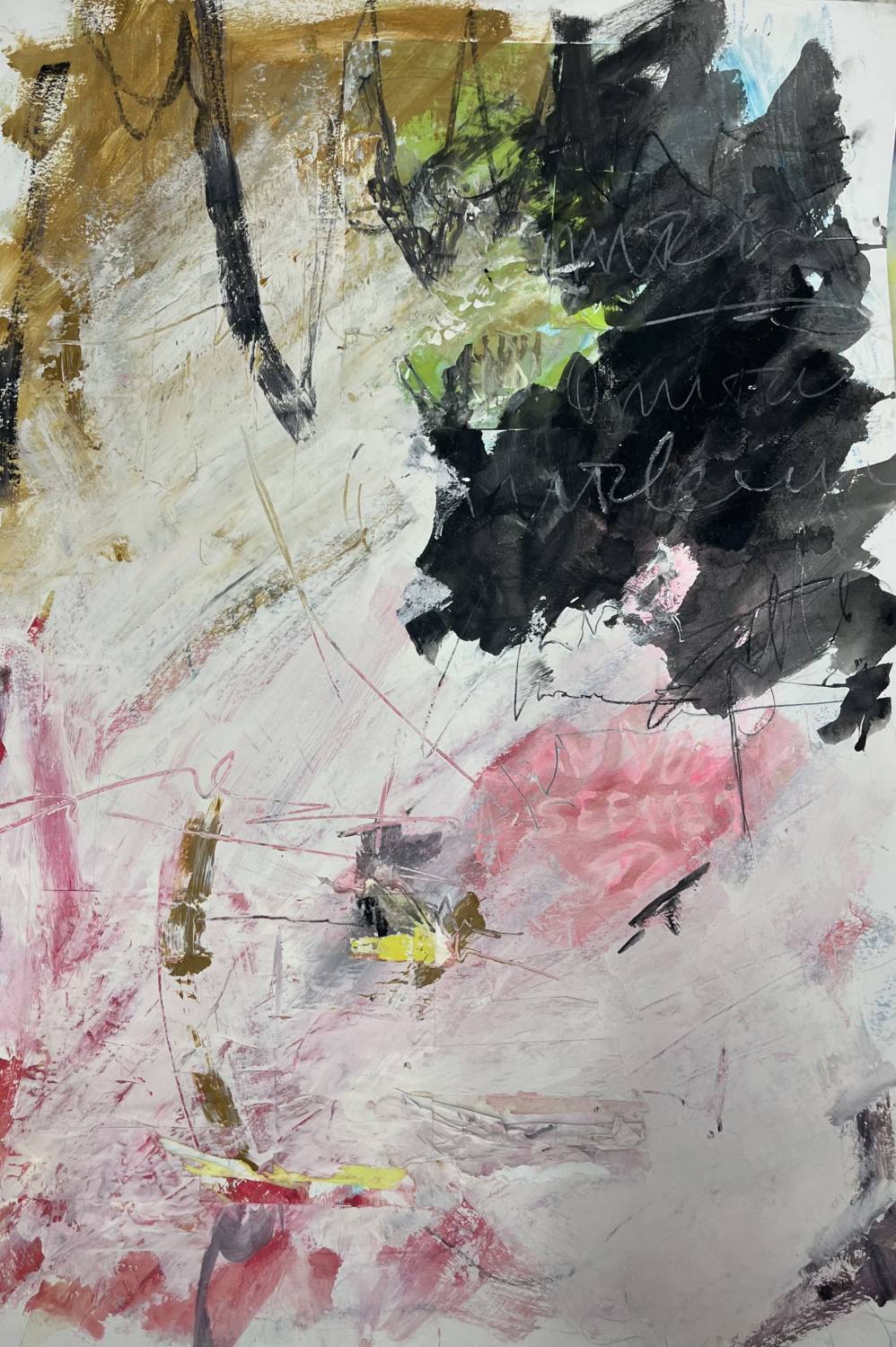
Philippa Charalambous: Memories and Time
Philippa Charalambous’ work deals with the relationship between the body and memories. In the photograph she presents, the body remembers. “Memories are activated by the smell and feel of some forgotten garment you once wore when you met it. Beautiful memories are locked, along with the ugly ones, in a world like a fairy tale that was once read to you. Because as much as the bad memories hurt, the beautiful ones hurt too. The space becomes part of some dream in which you can’t tell exactly where you are and whether it was you or someone else who lived it. But the body remembers and leaves you marks to accompany you on your journey.”
The artist’s work focuses on the creation of imaginary scenes in which the female figure appears as something ethereal, adorable and intangible. “Not necessarily because she is beautiful, but because she carries a power and a history of suffering and abuse. So the female figure gives other meanings to my work.”
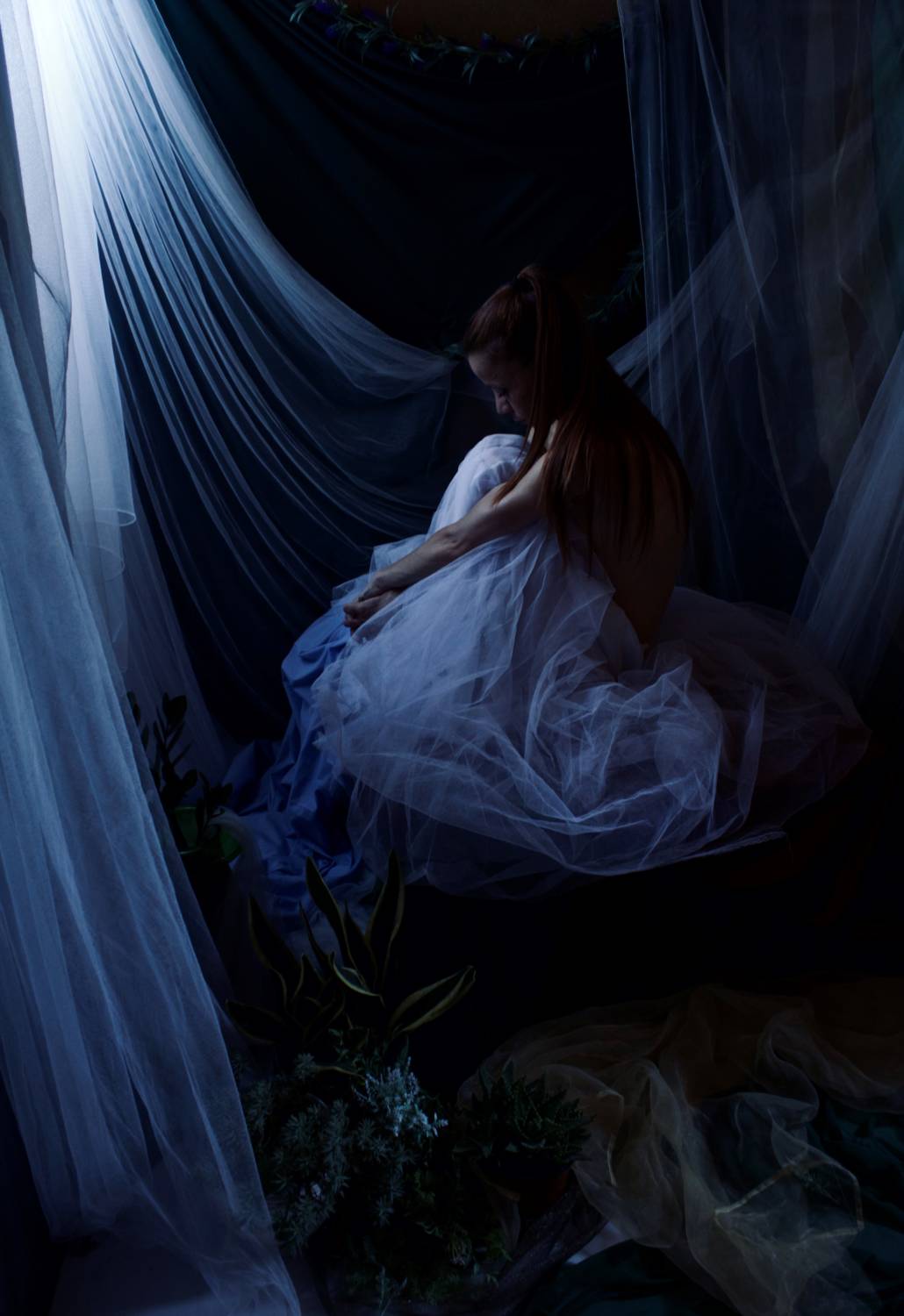
Limassol, Lumiere Gallery (25344141). The exhibition entitled “MEMORY/MEM-ORIA: Exploring the Boundaries of Memory” will run until 20 January 2024.


